Houston, Texas – The quarter-mile separating the commuter parking lot from the main campus of the University of Houston- Downtown (UHD) is not an insurmountable distance. Still, given Houston’s famously oppressive humidity, most students choose an air-conditioned shuttle bus – or a trip on the city’s light-rail system – over a stroll to class.
However they get to campus, few of UHD’s 14,000-plus students will ever travel farther to earn a college degree than Lisa Carpenter. For four painful months in the late 1990s, Carpenter had an unobstructed view of the UHD campus from the upper floor of a building just a few hundred yards from that commuter lot.
“I would look out the window every day, watching the students going to classes,” Carpenter recalls. “It was so depressing, knowing where they were going and where I was going.”
Her destination was a state prison. Held temporarily in the downtown Harris County Jail, Carpenter was scheduled for transfer to serve a two-year sentence for felony prescription fraud.
Now a UHD accounting major, Carpenter regularly passes the lockup on her way to classes in the former Merchants and Manufacturers (M&M) Building, a massive Art Deco edifice with 14 miles of floor space and 40,000 windows panes, many of them overlooking the skyline of the nation’s fourth-largest city. Carpenter, 42, doesn’t hide from her past, choosing instead to embrace it as a reminder of where she’s been and how far she’s come. From a fifth-floor library conference room window, Carpenter raises a blind to point out the jail to a visitor. She lingers a moment, absorbing the reverse view of the building she occupied briefly more than 15 years ago.
“Humbling,” she mutters. “Very humbling.”
UHD, a four-year institution where the average student is a shade over 27 years old, houses more than its share of compelling back stories. Few are as dramatic as Carpenter’s, but each experience in its own way defines this urban university, where 70 percent of students are the first in their families to enter higher education.
To UHD officials, the predominance of first-generation and nontraditional learners serves as a constant reminder that academics, though paramount, aren’t the be-all and end-all for students here. Classroom experiences are just one part of the broader mosaic of personal biography, community involvement and service learning that shapes UHD students.
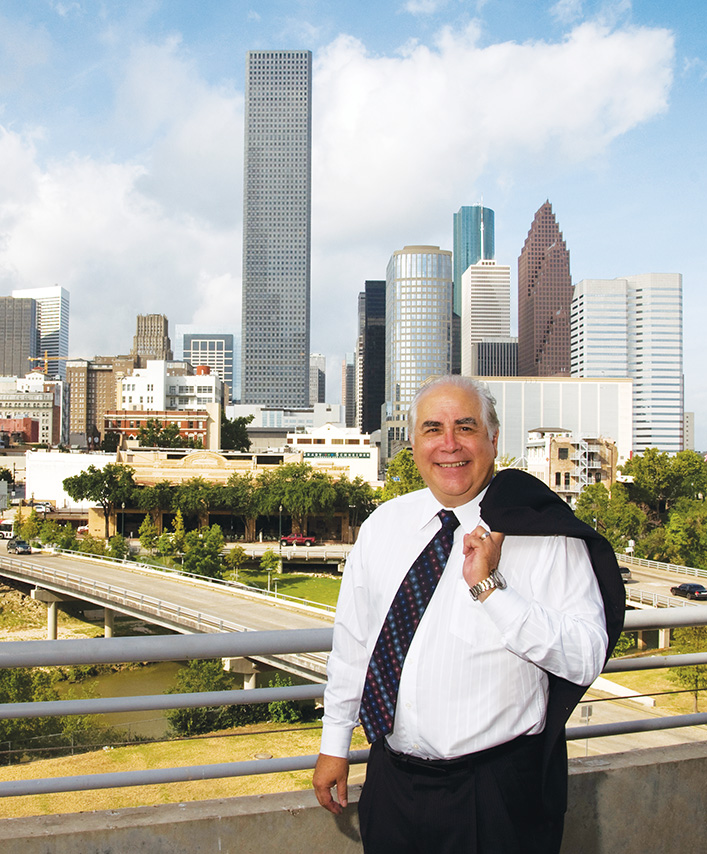
“We really believe in not just educating or helping prepare people for vocations or careers, because any university can do that,” says UHD President William V. Flores. “We believe in really educating future citizens and helping them to be engaged and educated citizens who are committed to making a better society and country. That is embedded in our philosophy and should be at the heart of what all public institutions stand for.”
The commitment to turn out well-rounded graduates, otherwise evident in every corner of this largely vertical campus, has yet to materialize on the student transcripts that UHD submits to prospective employers and graduate school admissions officers. But that will change once the university completes a full-throttle effort to transform the transcript it has used for 41 years into a document designed to portray a full range of student accomplishments, on and off campus.
Workforce implications
“A lot of employers complain that students aren’t necessarily ready for the job market coming straight out of college,” says senior psychology major John Locke, president of the UHD Student Government Association. “It’s really important to highlight what students are doing in extracurricular activities to help employers translate that directly to the workforce.”
Locke sees the enhanced transcript as an opportunity for students to highlight “the high-impact learning experiences, learning opportunities where you are actually in the trenches, boots on the ground.”
Third-year Spanish major and honors student Edith Aldaba calls the student record reform effort an opportunity to show corporate recruiters and graduate school admissions offices that a UHD education is much more than “school, school, school and grades, grades, grades.” She insists that “including the organizations and community service is more important than just the grades, because it puts you ahead of other students who have just focused on school. You’ve actually made a difference.”
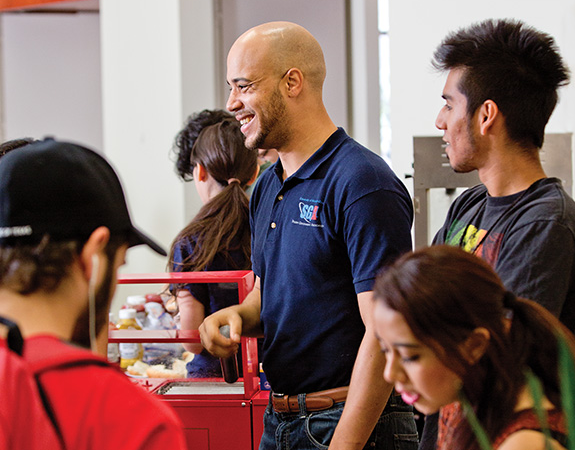
UHD officials hope to complete the reform project by the time the current class of freshmen earn their degrees four years from now. Until then, the transcript will basically replicate the document that certified the academic status of 1997 graduate Laquitta DeMerchant.
Until recently, DeMerchant hadn’t given much thought to the record of her undergraduate course work in UHD’s computer information systems degree program. Now though, from a distance of 18 years, DeMerchant sees that her transcript skips over her tenure as treasurer of the UHD chapter of the Association of Information Technology Professionals and ignores the interpersonal skills she perfected as a member of the prestigious Partners in Leadership group.
Clearly, DeMerchant has overcome whatever obstacles the transcript of yesteryear might have placed in her career path. As founder, president and chief executive officer of Fuzion Apps, DeMerchant and her computer systems firm have won national acclaim (including a visit to the White House and personal recognition from the president) for developing “Aequitas,” a mobile application that gives job applicants instant background information about potential employers.
As a business owner, DeMerchant now has a deeper understanding of what is missing from her undergraduate record. “The transcript today is archaic,” she says. “It doesn’t meet the times.” And she remembers a long-ago classmate who exemplified the deficiencies. The student was a terrible test-taker, DeMerchant recalls, “but everyone knew he was the smartest kid in the computer information program.” The intangibles – such as his ability to quickly decipher complicated equations and share the solutions with classmates – weren’t reflected on his official record. And so, to prospective employers, the student was, at best, a “C” student.

In her current role, DeMerchant is often called on to review job applications, so she understands now more than ever what the transcript didn’t say about her classmate. “I’m aware of the gap,” she says.
Filling that gap – helping the student record convey what has largely been missing – has been the driving force behind the transcript work, not just at UHD, but at institutions across the nation. Specifically, these institutions are looking for ways to enhance the student record so that it reflects not just what students have done – the courses taken, activities pursued, honors earned, etc. – but what they have learned from what they’ve done. Ultimately, tomorrow’s transcript, the fully revamped student record, will go beyond a mere list to provide concrete, reliable evidence of a student’s knowledge, skills and abilities.
Admittedly, the reform effort is a long way from that ultimate goal, but the journey has clearly begun. And much of the fuel for that journey comes from the demands of a job market that continues to evolve more than five years after the Great Recession.
“Employers are looking for things (students) have done. They want someone who can walk in and learn the job quickly,” says Robert Sheets, a professor and workforce analyst with the George Washington University Institute of Public Policy.
The revitalization of the transcript also responds to the needs of what used to be called nontraditional students, those who are not on a four-year residential campus and therefore constitute the growing majority of postsecondary students. Millions of such students are enrolled at community colleges and at four-year institutions such as UHD and the University of Maryland University College (UMUC), an online institution that caters to professionals and military personnel, many stationed overseas.
“Because we’re primarily online, our students don’t always partake in what might be considered traditional campus activities,” says UMUC Associate Vice Provost and Registrar Joellen Shendy. “But they may partake of activities in a different environment. For instance, we have full-time students who are PTA leaders. You won’t find an 18-year-old leading a PTA. The kinds of things our students are involved in tend to look a little different.”
The student record revisions envisioned by UHD will showcase the school’s commitment to educating its student beyond the boundaries of classrooms, labs and lecture halls.
“These students are street-smart; they realize they have to give something back to the community, and we’re giving them that chance,” says Associate Vice President of Academic Affairs Faiza Khoja.

She and other school officials say first-generation students—seven out of ten UHD learners—stand to benefit most from student record reform. Many such students find it difficult to navigate the unfamiliar territory of the college experience.
“I had the support of my parents, but they weren’t able to guide me through it,” recalls Claudia Chavez-Pinto. “It was all on me. There was emotional support, but that was about all.”
Chavez-Pinto earned her degree and is now the principal of a Houston elementary school. But most first-generation UHD students don’t fare as well. In fact, of those who enrolled as freshmen in 2008, only 19.2 percent had earned a diploma by 2014 (nationally, 59 percent of college freshmen graduate within six years). Moreover, first-generation students who do reach the finish line often stumble into a competitive employment marketplace that puts a premium not on what you know, but on who you know.
“Nontraditional students haven’t necessarily had the privileges of soccer coaches and that type of guidance growing up,” notes Poonam Gulati, an associate professor of biology and microbiology and interim director for the Center for Community Engagement. Having a more comprehensive student record “helps them advance their own careers, whatever they may be.”
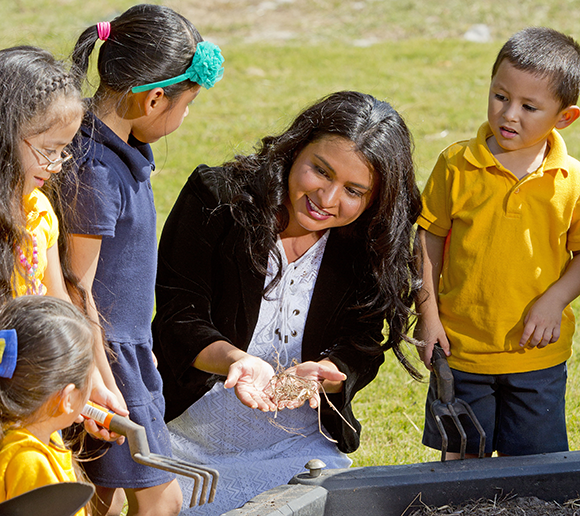
To Vida Robertson, the extended transcript helps mitigate the often-invisible advantage of societal privilege.
“It shifts us in a new direction,” says Robertson, an associate professor of English and director of the Center for Critical Race Studies. “In previous generations, who you knew spoke directly to the kind of experience you could bring to bear and the quality of work (you could do),” he says. “It was an undocumented space where we allowed a certain social cachet.
“The comprehensive approach to documenting student work allows us to offset that ‘good ol’ boy’ network by saying that ‘Yes, (a student took) certain classes, and we’ve qualitatively and quantitatively come to these (grades).’ But there’s a broader construct that also speaks to their knowledge, their experience and their value.”
Puncturing privilege
Robertson compares the new transcript’s function to that of “someone’s dad or their (father’s) friend at the golf course, giving them a connection. This is a new-age way of doing it, especially for those who are less connected.”
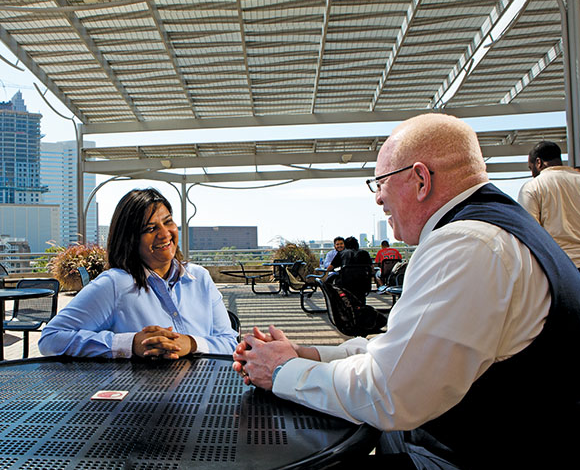
For Associate Vice President Khoja, the importance of adding a real-world component to the academic transcript became clear when she served as a liaison between UHD seniors and area employers. The employers didn’t dismiss grade-point averages, she noticed, but they were just as interested in another assessment tool. “They kept asking about the capstone projects,” Khoja recalls, referring to comprehensive, end-of-program projects designed to showcase students’ mastery of the subject matter.
The importance of considering the “whole student” prompted UHD to focus on community engagement as a core part of the transcript-revision effort. UHD loosely defines community engagement as outside volunteer activity that doesn’t exceed 10 hours per semester. Campus officials view community engagement as a gateway to increased enrollment in so-called “circular service learning” courses – classes that allow students to earn academic credits through community-based projects.
Flores, the college president, says an analysis of data that showed second- and third-year students struggling to connect academics to “the outside world” helped make service learning a top priority.
A practical example can be found at Crockett Elementary, a specialized pre-K-5 school on Houston’s near north side – not coincidentally, the school that is led by Principal Chavez-Pinto. As a UHD undergraduate, she did her student teaching at Crockett. These days her pupils, some as young as 5, are mastering microscopes, planting gardens, analyzing the contents of bottled water and, by smearing a small amount of yeast on the hand of one student, learning how an epidemic can spread through the simple act of shaking hands.
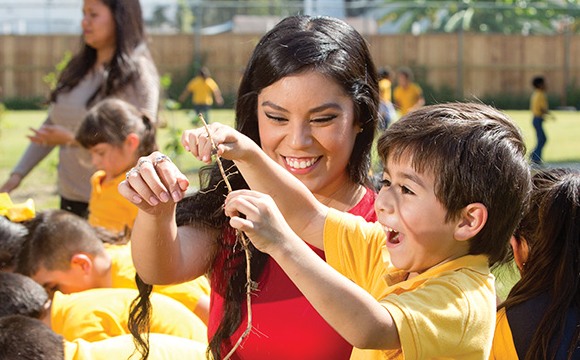
The instructors teaching these rudimentary science lessons aren’t employees of the Houston Independent School District; they’re UHD biology students. One of those students, senior Milimar Murillo, says her experience of guiding Crockett third-graders through the water-testing experiment reinforced the adage that “you don’t really know something until you teach it to someone else.”
Gulati, the associate professor of biology and microbiology, calls the Crockett-UHD partnership a logical extension of a science program that promotes undergraduate research. “It’s really exciting because, at their age, which is mostly sophomores, they realize they can contribute something to the community,” says Gulati. “Sometimes they think they have to get their Ph.D.s before they can start doing any of this stuff. A lot of them tell me that when they go to their med school or grad school interview, this pops up to the committee.”
For Chavez-Pinto, the UHD-Crockett partnership is like a mirror that allows her to see two versions of her younger self: one in the faces of the 500 children she welcomes to school each morning, and another in the UHD students who come to assist.
“They are almost like Big Brothers/Big Sisters,” she says of the relationship between her pupils and the UHD teaching teams. “It’s not only tutoring. (The young ones) look at the college kids and have aspirations to be like them. It’s a connection that shows them that (college) can happen for them, too.”
UHD student Irma Zia, who had no serious brush with science until the seventh grade, knows exactly what Chavez-Pinto means. “There were science studies,” Zia recalls of her Houston elementary school experience. “But it wasn’t stressed as much as history or English. I didn’t see a microscope until intermediate school.”
And when that finally happened, she was hooked. She’s now a fourth-year microbiology major, preparing for the Medical College Admission Test, and planning to apply to medical schools in the spring.
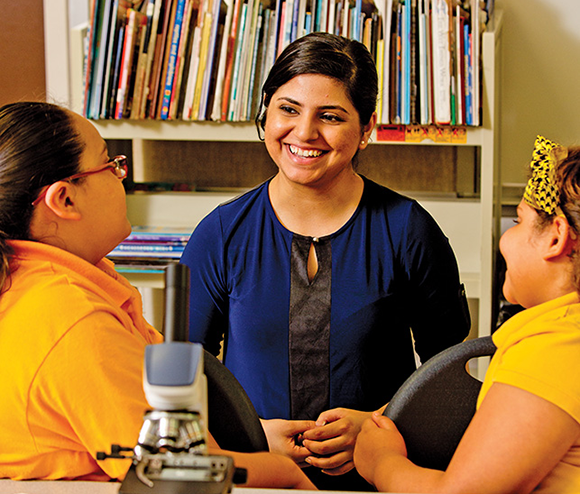
During the interview process, Zia plans to highlight a vital component of her education that won’t be listed on the UHD transcript: The lessons she’s helped teach at Crockett Elementary the past two years.
Filling a gap in her own early education, Zia has engaged the Crockett pupils in a variety of science-based activities, none more engaging than an “eeew”-inducing examination of their own skin. “We swabbed their necks, their arms and their feet to show them that bacteria are everywhere,” Zia says. “They didn’t believe it because they couldn’t see anything. Then we put the swabs under the microscope. They were a little surprised … and a little disgusted.”
Once the logistics are hammered out, UHD officials are confident that tweaking an existing student database may be all that is necessary to turn the conceptual transcript into a reality.
Vida Robertson predicts a smooth transition. “It’s already part of our lives,” he says, referring to the interactive student record program known as “GatorSync” (a nod to the school mascot). Once operational, the system will allow students to add content regularly. And if the reaction of junior Edith Aldaba is any indication, the feature should be well received.
“Whenever you go for a job interview or a college (interview), they ask you what kind of community service you’ve done,” says Aldaba, a Spanish major and an officer in the UHD Environmental Club. “It’s easy to lose track of that. Having a system where you can document it is going to be helpful.”
Were the timing different, John Locke would benefit greatly from the upgraded transcript. Unfortunately, Locke’s official record now fails to include his two terms as president of the UHD Student Government Association, the findings of a comprehensive study he prepared on homelessness in Houston (a subject he unfortunately knew far too well), and his leadership of a student group that serves meals to the poor on the steps of the downtown library. It overlooks the fact that he has realized his childhood dream “of one day working in one of those tall skyscrapers” by landing an internship with an international brokerage firm.
And it says nothing about his inspiring back story.
Locke dropped out of high school at age 15, choosing what he now admits was an “uncharted path” of alcohol and drug abuse. Employment through his mid-20s was sporadic. When money ran low, as it often did, Locke took refuge in homeless shelters – including some he would later revisit for his UHD research project. He also spent time in Houston-area lockups – including the Harris County Jail, where run-ins with the law landed him on more than one occasion.
“I was a screw-up,” Locke admits. “I’m embarrassed by it now.”
The problem was never lack of intelligence. “I didn’t have the motivation,” Locke says. “I was caught in a different ideal of myself.” The turnaround came when Locke, tired of “surrendering to negativity,” pursued and earned his GED. Soon after that, at age 27, he enrolled at UHD as a psychology major.
“Coming to the university helped me find my identity,” he says. “Better late than never, right?”
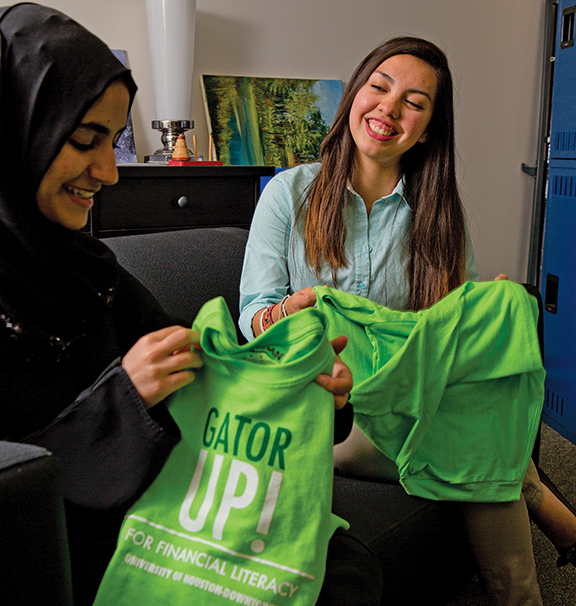
Locke’s story is sure to capture the heart of even the most hardened hiring manager, but HR directors will have to wait a few years to hear it. Though due to graduate in Spring 2016, he plans to stay at UHD and pursue a master’s degree in nonprofit management.
If he follows through, Locke could well encounter another former resident of the nearby Harris County Jail. Lisa Carpenter also is giving serious thought to seeking a master’s in nonprofit management – an achievement that would cap an already remarkable transition.
Carpenter, jailed for phoning in an illicit drug prescription, paid for her mistake long after her two-year sentence ended. Having given birth to her first child while incarcerated, she struggled through young motherhood. As a paroled felon, Carpenter found that the stigma blocked her from gainful employment and followed her as she moved from one higher-ed institution to another. Saying, “I never got into the college groove,” she married and had a second child.
After a string of unfulfilling jobs, she volunteered her services at Santa Maria Hostel, a Houston nonprofit that provides assistance and counseling to women struggling with difficulties similar to her own.
That was a turning point. Her involvement with the hostel’s clients – who battle homelessness, substance abuse and mental health issues – increased to the point that the nonprofit gave her a seat on the board of directors. Always good with numbers, Carpenter now serves as the board treasurer, and she’s found her work at Santa Maria to be something of a talisman.
After years of making do in menial jobs, she landed a full-time accounting position soon after being named to the nonprofit’s board. About the same time, perhaps not coincidentally, she developed a passion for running. Her zeal for fitness soon found its way to Santa Maria, beginning with Carpenter’s decision to teach a nutrition class. Before long, she was helping Santa Maria clients prepare for a 5K road race, leading training regimens along Houston’s byways.
Running from trouble
“These are women who have never thought about exercise,” Carpenter says. “It’s always been drinking and drugging. Now I’m asking them to run three miles.”
Meanwhile, Carpenter regained her educational footing by enrolling in her fourth institution of higher learning – UHD – as an accounting major. Returning to school wasn’t easy. As a convicted felon, she is ineligible for most federal and state grants and has therefore been forced to self-finance the bulk of her education (UHD tuition and fees average about $8,000 per semester). Also, like most nontraditional students, she’s had to juggle the simultaneous demands of family, work, school and, in her case, Santa Maria.

Her accomplishments outside the classroom, Carpenter says, demonstrate why an expanded transcript is an absolute necessity for nontraditional learners like her.
“I’m 42, so I’m getting a late start on my career, and I’m competing with kids straight out of college,” she says. “A lot of them are willing to work for a little less money, and many of them may have had straight A’s. My transcript in the past wasn’t that great, although recently it’s gotten a lot better. But what’s going to distinguish me from the 23-year-old with straight A’s? Why would they pick me over them? Having a list of grades on a piece of paper just isn’t enough. But if an employer is able to dig in a little and see more than the grade on a piece of paper, it may make the difference between getting my foot in the door or not.”
In other words, the expanded transcript levels the playing field and instills hope – outcomes one might well expect on a campus distinguished by its commitment to diversity and public service.
“We’re a university that gives a second chance,” says Khoja, the associate vice president. “We’re a university that is a stepping stone. We’re here for students who want to make a difference.
“We always talk about America being the land of opportunity. But we see more and more disparity; the middle class is diminishing. But by connecting the dots we’re bringing opportunity to minorities and the underrepresented. We’re telling them: ‘Hey, you have a chance. Let’s see how far we can take you.’”■
